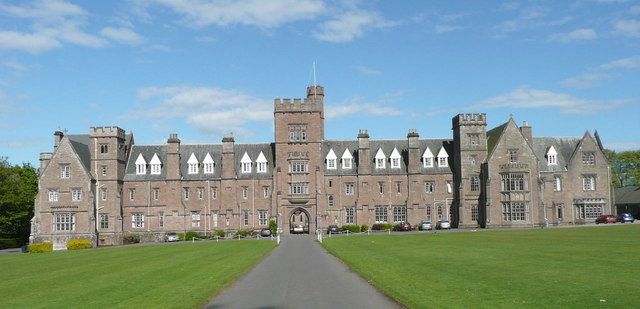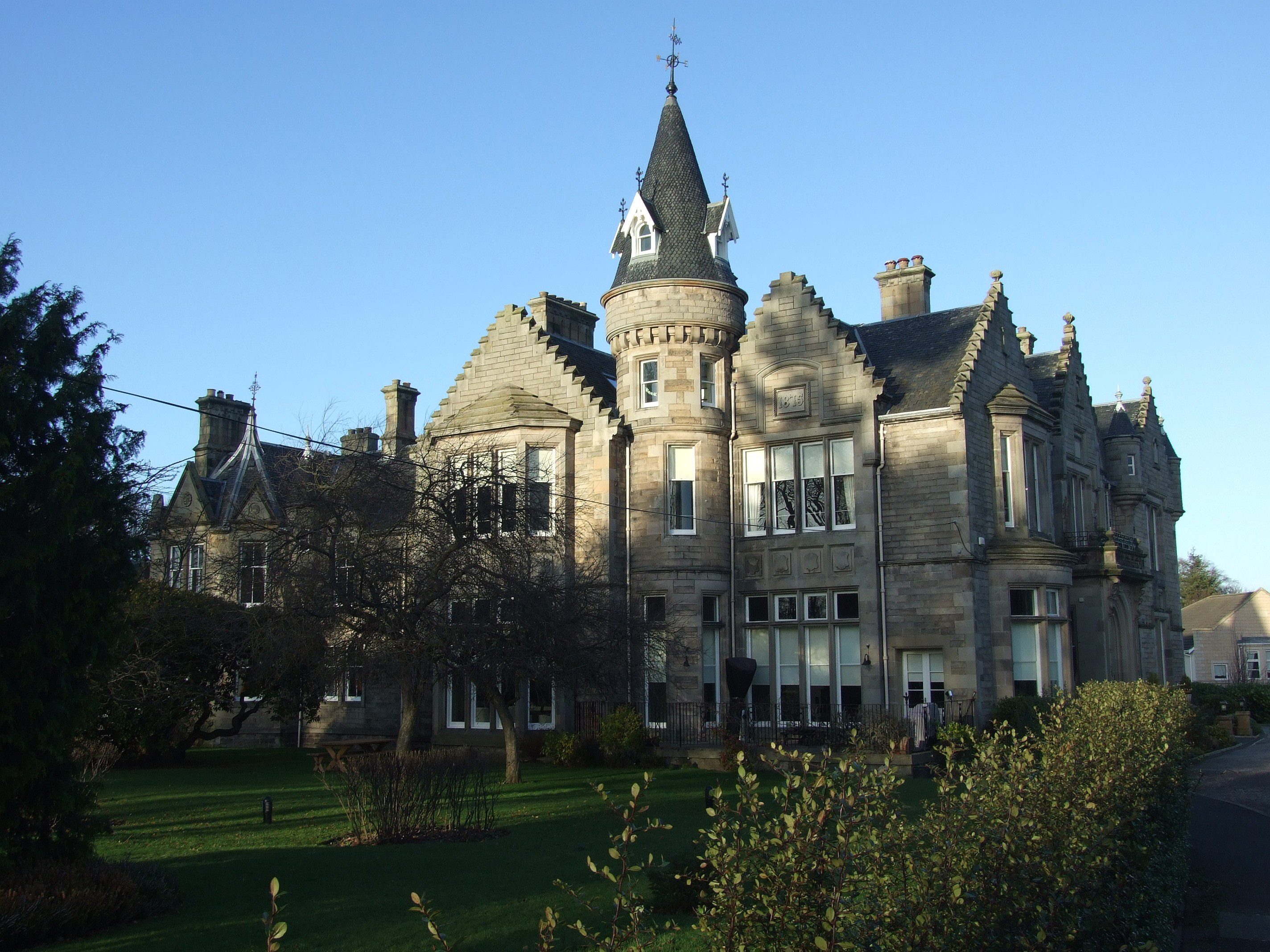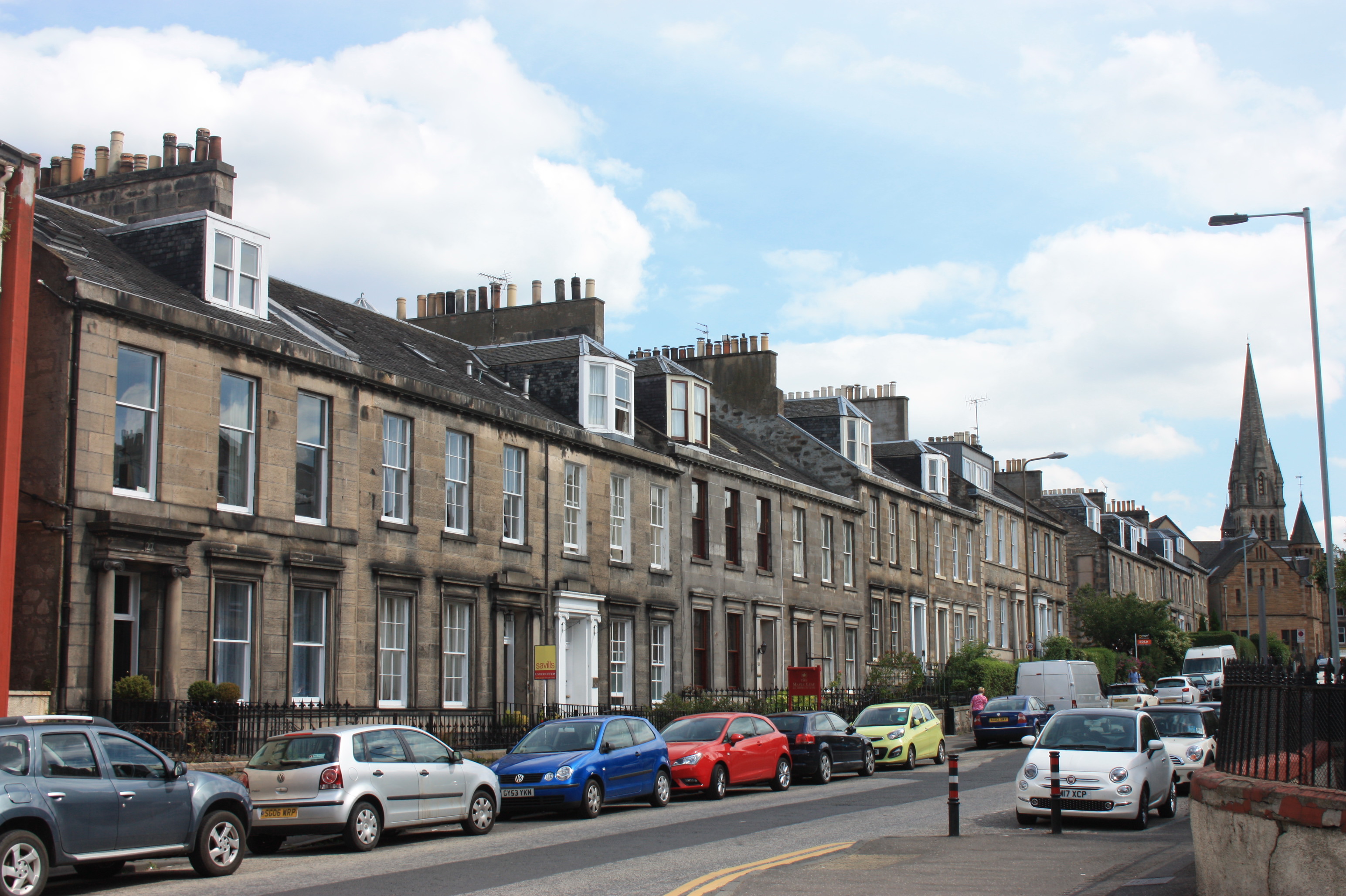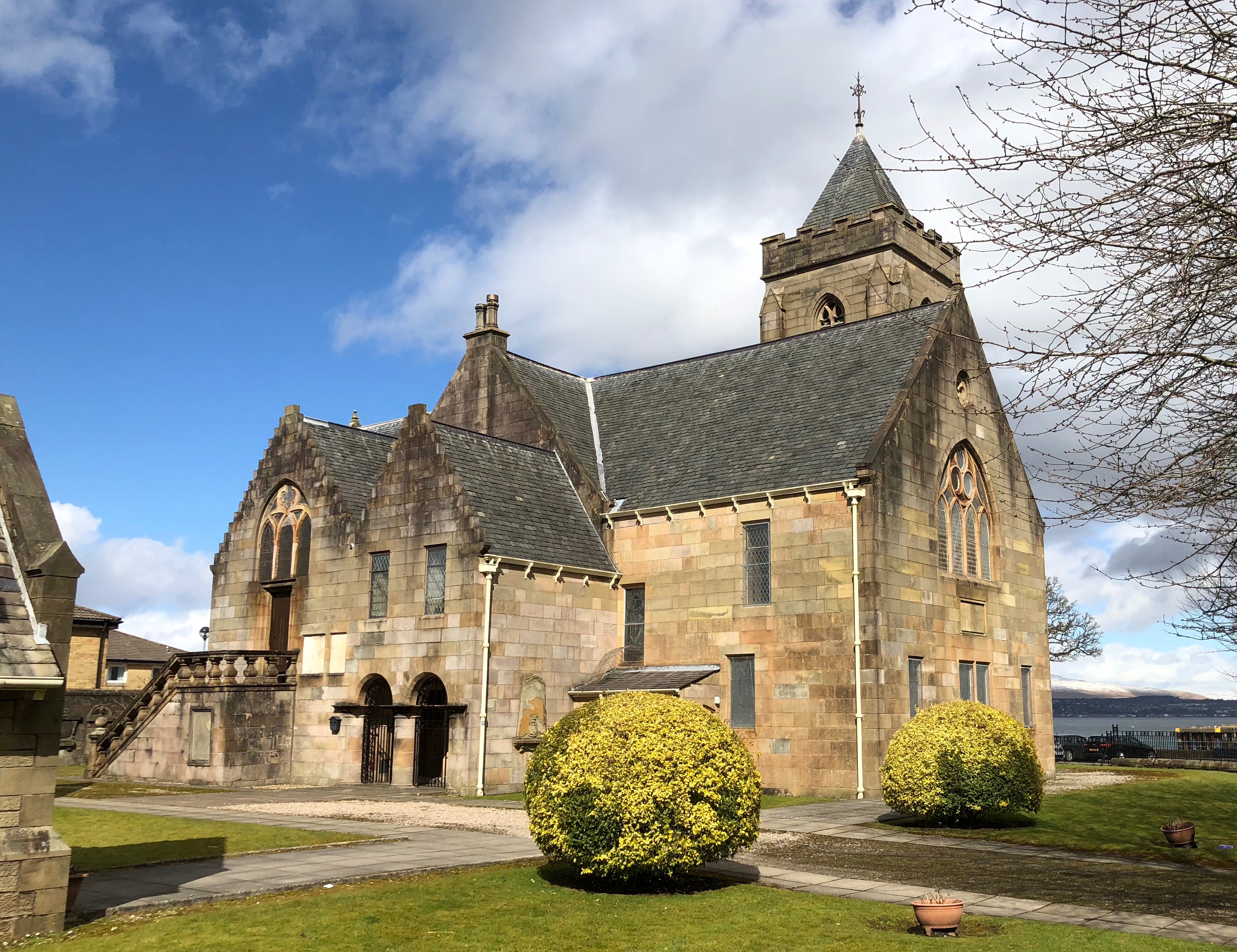|
David Cousin
David Cousin (19 May 1809 – 14 August 1878) was a Scottish architect, landscape architect and Urban planning, planner, closely associated with early cemetery design and many prominent buildings in Edinburgh, Scotland, Edinburgh. From 1841 to 1872 he operated as Edinburgh’s City Architect, City Superintendent of Works (also known as the City Architect). Life Cousin was born in North Leith on 19 May 1809, the son of Isabella Paterson (1773-1851) and John Cousin (1781-1862), and was baptised in North Leith Parish Church, North Leith Church. Initially he trained under his father as a joiner, but went on to study mathematics with Edward Sang. He trained as an architect under William Henry Playfair, Scotland’s most eminent architect of the time, leaving Playfair's practice in 1831 to set up on his own. During this time he competed, but was unsuccessful, in the competition to design the Scott Monument. He established a partnership with Glasgow, Glaswegian engineer William Gal ... [...More Info...] [...Related Items...] OR: [Wikipedia] [Google] [Baidu] |
North Leith
Leith (; ) is a port area in the north of Edinburgh, Scotland, founded at the mouth of the Water of Leith and is home to the Port of Leith. The earliest surviving historical references are in the royal charter authorising the construction of Holyrood Abbey in 1128 in which it is termed ''Inverlet'' (Inverleith). After centuries of control by Edinburgh, Leith was made a separate burgh in 1833 only to be merged into Edinburgh in 1920. Leith is located on the southern coast of the Firth of Forth and lies within the City of Edinburgh council area; since 2007 it has formed one of 17 multi-member wards of the city. History As the major port serving Edinburgh, Leith has seen many significant events in Scottish history. First settlement The earliest evidence of settlement in Leith comes from several archaeological digs undertaken in The Shore area in the late 20th century. Amongst the finds were medieval wharf edges from the 12th century. This date fits with the earliest docum ... [...More Info...] [...Related Items...] OR: [Wikipedia] [Google] [Baidu] |
Edward Sang
Edward Sang FRSE FRSSA LLD (30 January 1805 – 23 December 1890) was a Scottish mathematician and civil engineer, best known for having computed large tables of logarithms, with the help of two of his daughters. These tables went beyond the tables of Henry Briggs, Adriaan Vlacq, and Gaspard de Prony. Personal life Sang was born in Kirkcaldy on 30 January 1805, the son of Jean Nicol and Edward Sang, Provost of Kirkcaldy. He attended the Subscription School in Kirkcaldy and from there went on to study at the University of Edinburgh. In the 1830s he is listed as a teacher of mathematics living at 32 St Andrew Square in Edinburgh. He was elected a Fellow of the Royal Society of Edinburgh in May 1836. In 1884 he was awarded their Makdougall-Brisbane Prize. He served as their Vice President 1883 to 1885. In 1841 he took the role of Professor of Mechanical Science at Manchester New College. In 1854 he briefly served as Professor of Mechanical Science in Constantinople. He retu ... [...More Info...] [...Related Items...] OR: [Wikipedia] [Google] [Baidu] |
John Henderson (architect)
John Henderson (1 March 1804 – 27 June 1862) was a Scottish architect operational in the mid-19th century. He is chiefly remembered as a church architect, with his early work being in the Gothic revival and tractarian style, before developing his own distinct style. Life He was born at the Den Nursery in Brechin to John Henderson and Agnes Thomson. Henderson's father was a gardener for William Maule, 1st Baron Panmure, at Brechin Castle. He was initially apprenticed as a carpenter but after completing this he pursued studies in drawing and building construction. His first design was for the addition of a steeple at the parish church in Arbroath in 1831. After completing this project, he became an assistant to architect Thomas Hamilton (architect), Thomas Hamilton; a post he remained in until establishing his own architecture firm in 1833. This was set up at 1 Blenheim Place (next to R & R Dickson's office) before moving to 6 Union Street. In 1836, he relocated into mo ... [...More Info...] [...Related Items...] OR: [Wikipedia] [Google] [Baidu] |
John Chesser (architect)
John Chesser (1819-1892) was a nineteenth-century Scottish architect largely based in Edinburgh, Scotland, Edinburgh. He was described as "the prime exponent of terrace design at the time". A very high number of his works are now listed building, category A listed buildings, evidencing the quality of his work, particularly in the West End of Edinburgh. Life He was born on 18 September 1819 on the Dalmeny House estate, a few miles west of Edinburgh, his elderly father, William Chesser (1757-1849), being Clerk of Works there. After spending some years working on the Revesby, Lincolnshire, Revesby House estate in Lincolnshire he returned to Dalmeny to fill his father’s shoes on his death. By 1852 he appears to have been working for the City Architect, David Cousin. Through his experience, in 1858, he then gained a post as Superintendent of Works at George Heriot’s School following the death of Alexander Black (architect), Alexander Black. This role included developing the h ... [...More Info...] [...Related Items...] OR: [Wikipedia] [Google] [Baidu] |
John Maitland (accountant)
John Maitland (17 January 1803 - 6 September 1865) filled the position of Accountant to the Court of Session for several years. He took a deep interest in religious schemes, especially those of the Free Church, to which he belonged. He presented to the Free Church the premises in North Bank Street, Edinburgh, occupied by them as a Presbytery hall and mission offices, the only compensation he received being the chambers vacated by them in Frederick Street. In many other respects he was a liberal donor to the schemes of the Free Church; and, as a leading elder, had for many years a seat in the General Assembly of that denomination. Mr Maitland was for a considerable number of years a partner of Mr William Wood. He became a member of the Society of Accountants at its origin in 1853. He was a director of the Commercial Bank of Scotland, and of other public corporations. Early life John Maitland was the sixth son of Sir Alexander Gibson Maitland, Baronet of Clifton Hall, county of E ... [...More Info...] [...Related Items...] OR: [Wikipedia] [Google] [Baidu] |
Pilrig
Pilrig is an area of Edinburgh, the capital of Scotland. The name probably derives from the long field (rig) on which a peel tower (pil/peel) stood. There is evidence of a peel tower situated on an area of higher ground above the Water of Leith. Pilrig lies midway between Leith and Edinburgh, west of Leith Walk. It is split by Pilrig Street, which marks the division between the EH6 and EH7 List of postcode districts in the United Kingdom, postcode districts (also the old division between Edinburgh and Leith hence the name of the bar opposite being originally the Boundary Bar, then City Limits and now known simply as "the Boundary"). Along the north-east side of Pilrig Street lies Pilrig Park, within which is Pilrig House, the heart of the former estate of the Balfour family. The 19th-century Rosebank Cemetery is located at the west end of Pilrig Street, at the junction of Broughton Road. __NOTOC__ History Archaeology, Archaeological excavations in 2006 revealed eviden ... [...More Info...] [...Related Items...] OR: [Wikipedia] [Google] [Baidu] |
Free Church Of Scotland (1843-1900)
In contemporary usage, the Free Church of Scotland usually refers to: * Free Church of Scotland (since 1900), that portion of the original Free Church which remained outside the 1900 merger; extant It may also refer to: * Free Church of Scotland (1843–1900) The Free Church of Scotland is a Scotland, Scottish Christian denomination, denomination which was formed in 1843 by a large withdrawal from the established Church of Scotland in a schism known as the Disruption of 1843. In 1900, the vast major ..., seceded in 1843 from the Church of Scotland. The majority merged in 1900 into the United Free Church of Scotland; historical * Free Church of Scotland (Continuing), seceded in 2000 from the post-1900 Free Church; extant {{disambig ... [...More Info...] [...Related Items...] OR: [Wikipedia] [Google] [Baidu] |
Church Of Scotland
The Church of Scotland (CoS; ; ) is a Presbyterian denomination of Christianity that holds the status of the national church in Scotland. It is one of the country's largest, having 245,000 members in 2024 and 259,200 members in 2023. While membership in the church has declined significantly in recent decades (in 1982 it had nearly 920,000 members), the government Scottish Household Survey found that 20% of the Scottish population, or over one million people, identified the Church of Scotland as their religious identity in 2019. In the 2022 census, 20.4% of the Scottish population, or 1,108,796 adherents, identified the Church of Scotland as their religious identity. The Church of Scotland's governing system is Presbyterian polity, presbyterian in its approach, therefore, no one individual or group within the church has more or less influence over church matters. There is no one person who acts as the head of faith, as the church believes that role is the "Lord God's". As a pro ... [...More Info...] [...Related Items...] OR: [Wikipedia] [Google] [Baidu] |
Disruption Of 1843
The Disruption of 1843, also known as the Great Disruption, was a schism in 1843 in which 450 evangelical ministers broke away from the Church of Scotland to form the Free Church of Scotland. The main conflict was over whether the Church of Scotland or the British Government had the power to control clerical positions and benefits. The Disruption came at the end of a bitter conflict within the Church of Scotland, and had major effects in the church and upon Scottish civic life. The patronage issue "The Church of Scotland was recognised by Acts of the Parliament as the national church of the Scottish people". Particularly under John Knox and later Andrew Melville, the Church of Scotland had always claimed an inherent right to exercise independent spiritual jurisdiction over its own affairs. To some extent, this right was recognised by the Claim of Right of 1689, which ended royal and parliamentary interference in the order and worship of the church. It was ratified by the A ... [...More Info...] [...Related Items...] OR: [Wikipedia] [Google] [Baidu] |
Thomas Brown (architect)
Thomas Brown (1781 – 5 June 1850) was a Scottish architect in the early 19th century based in Edinburgh. He is best known for St. Mary's Church, Bellevue, Edinburgh, usually known as Bellevue Church. Life Born in England, by 1809 Brown was an established surveyor and draughtsman. In 1817 he married Jane Dick Brown (d. 31 August 1839). In February 1819 he received the prestigious appointment of Superintendent of the City Works in Edinburgh. This was during the city's major expansion to the north to create its New Town, and placed Brown on the then large salary of £250 per annum. In this role he replaced Thomas Bonnar who had been dismissed in early January 1819. Brown was largely responsible for the northern streets of the "Second New Town". During his time as Superintendent he employed David Cousin as his assistant and Cousin replaced him upon his retirement. This role was run from the City Chambers. In the 1830s his address was listed as 6 Argyle Square (demolished i ... [...More Info...] [...Related Items...] OR: [Wikipedia] [Google] [Baidu] |
Cambuslang
Cambuslang (, from ) is a town on the south-eastern outskirts of Greater Glasgow, Scotland. With approximately 30,000 residents, it is the 27th-largest town in Scotland by population, although, never having had a town hall, it may also be considered the largest village in Scotland. It is within the local authority area of South Lanarkshire and directly borders the town of Rutherglen to the west. Historically, it was a large Civil parishes in Scotland, civil parish incorporating the nearby hamlets of Newton, South Lanarkshire, Newton, Flemington, Westburn, South Lanarkshire, Westburn and Halfway, Cambuslang, Halfway. Cambuslang is located just south of the River Clyde and about southeast of the centre of Glasgow. It has a long history of coal mining, from at least 1490, iron working, iron and steel making, and ancillary engineering works, most recently The Hoover Company (in the town from 1946 to 2005). The Clydebridge Steelworks and other smaller manufacturing businesses conti ... [...More Info...] [...Related Items...] OR: [Wikipedia] [Google] [Baidu] |
Greenock
Greenock (; ; , ) is a town in Inverclyde, Scotland, located in the west central Lowlands of Scotland. The town is the administrative centre of Inverclyde Council. It is a former burgh within the historic county of Renfrewshire, and forms part of a contiguous urban area with Gourock to the west and Port Glasgow to the east. The 2011 UK Census showed that Greenock had a population of 44,248, a decrease from the 46,861 recorded in the 2001 UK Census. It lies on the south bank of the Clyde at the " Tail of the Bank" where the River Clyde deepens into the Firth of Clyde. History Name Place-name scholar William J. Watson wrote that "Greenock is well known in Gaelic as , dative of , 'a sunny knoll. The Scottish Gaelic place-name is relatively common, with another Greenock near Callander in Menteith (formerly in Perthshire) and yet another at Muirkirk in Kyle, now in East Ayrshire. R. M. Smith in (1921) described the alternative derivation from Common Brittonic *, ... [...More Info...] [...Related Items...] OR: [Wikipedia] [Google] [Baidu] |






